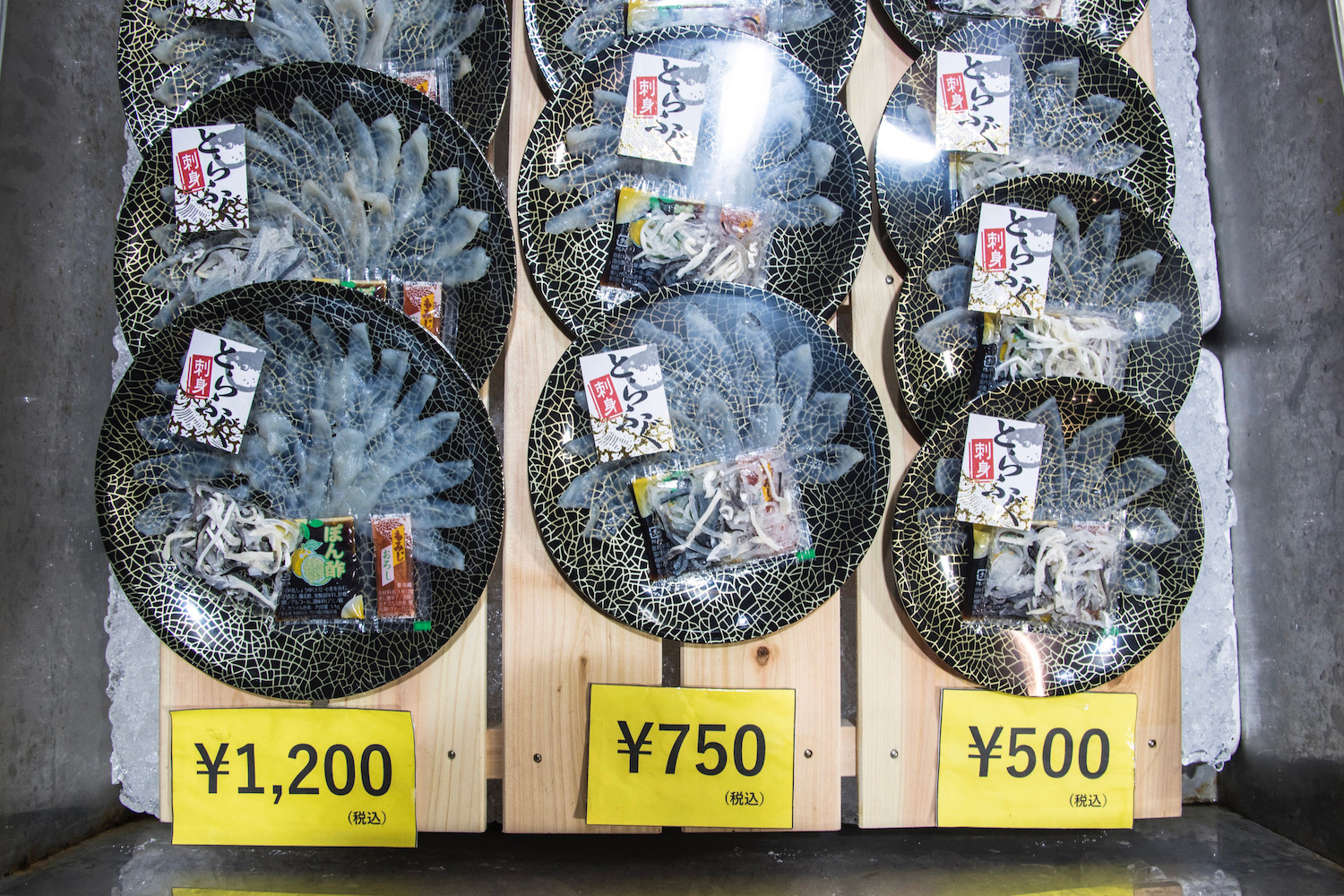I’ve spent a lot of my life in Asia—not just Japan—and have eaten (or refused to eat) some truly bizarre foods. From rural China, to small towns in Thailand and Vietnam, my travels in the Far East have greatly expanded my definition of what “food” even is!
I bring this up because, generally speaking, Japanese food is just not that adventurous. There are exceptions to this rule—and I’ll be listing a few over the coming paragraphs—but Japan is about as close to Western eating norms as anywhere in Asia gets.
To be sure, the unique Japanese foods I’m about to cover aren’t necessarily weird or shocking, which makes it easier to legitimately enjoy them. Because after all: If you only try a food in order to post about the novelty of having done so, did you really try it at all?
The Truth About (Most) Japanese Food
As I hinted in the intro to this piece, weird Japanese foods are relatively few and far between. This comes as a shock to some people, who first learned about Japanese food via sushi—aka raw fish, which is pretty weird to most non-Asians. (There’s also the myth that all Japanese food is healthy, which is definitely not true, but is also a topic for another post.)
Setting culinary expectations is just one of the steps you need to take as you plan your trip to Japan. If you don’t come from a visa-exempt country or plan to visit for purposes other than just for tourism, you’ll need to consult with the experts at Visa Express to procure necessary documentation for your trip. Because after all, you can only eat your way through Japan once you’ve successfully crossed the border!
My Favorite Weird Japanese Foods
Ika odori don (“dancing” squid rice bowl), Hakodate
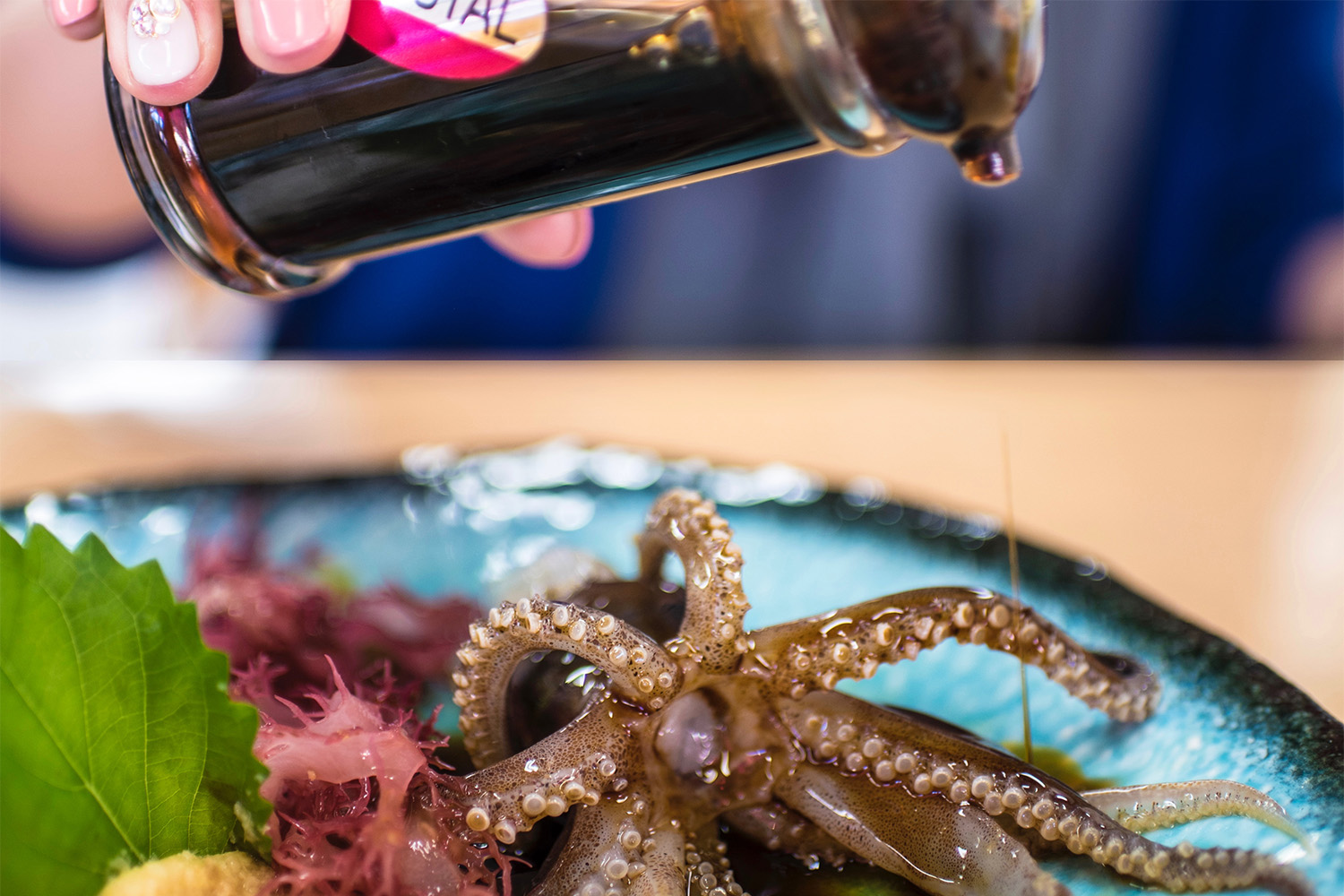
Spoiler alert: The “dancing” squid atop the ika odori don at Hakodate Morning Market is definitely dead. It moves because salt from soy sauce causes an electrical reaction in its nerve endings. Cruel or not, this is definitely one of the strangest (and most delicious) things to eat in Japan.
Fugu (pufferfish), Shimonoseki

Another unique food in Japan is the fugu pufferfish, which first came into the awareness of many Western travelers in the 1990s, when it was featured in a classic Simpsons episode. If you want to try this delicacy (which can be hazardous, but is almost never deadly), head to Karato Market in Shimonoseki, Yamaguchi.
Wasabi soft serve, Shizuoka
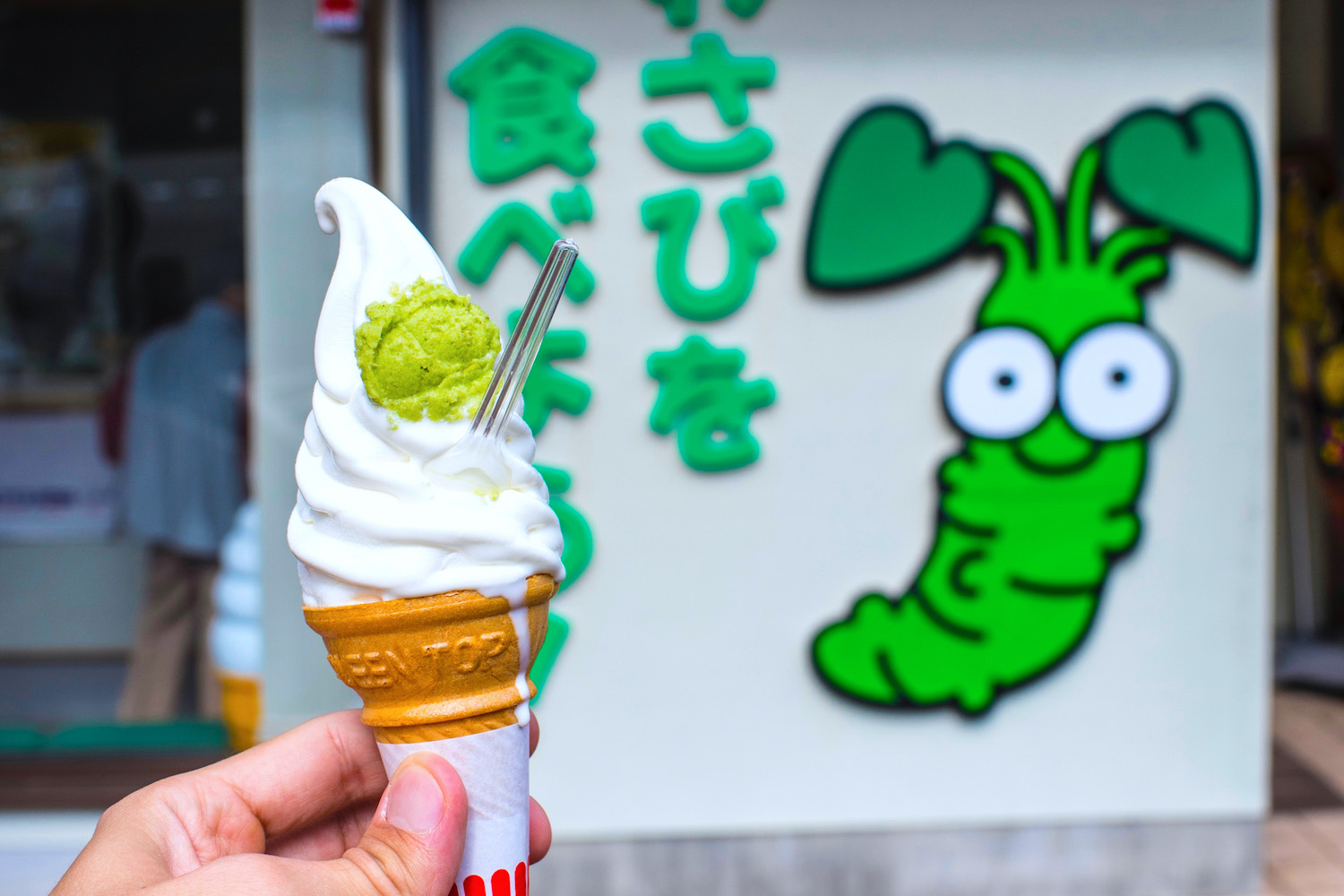
Soft-serve ice cream (usually just called “soft cream”) is ubiquitous in Japan, and available within the country in more flavors than perhaps any other place in the world. One of the strangest is actually milk ice cream served with a massive scoop of fresh wasabi, available in Shizuoka, the Japanese prefecture that produces the most wasabi.
Tobiuo (flying fish), Kagoshima
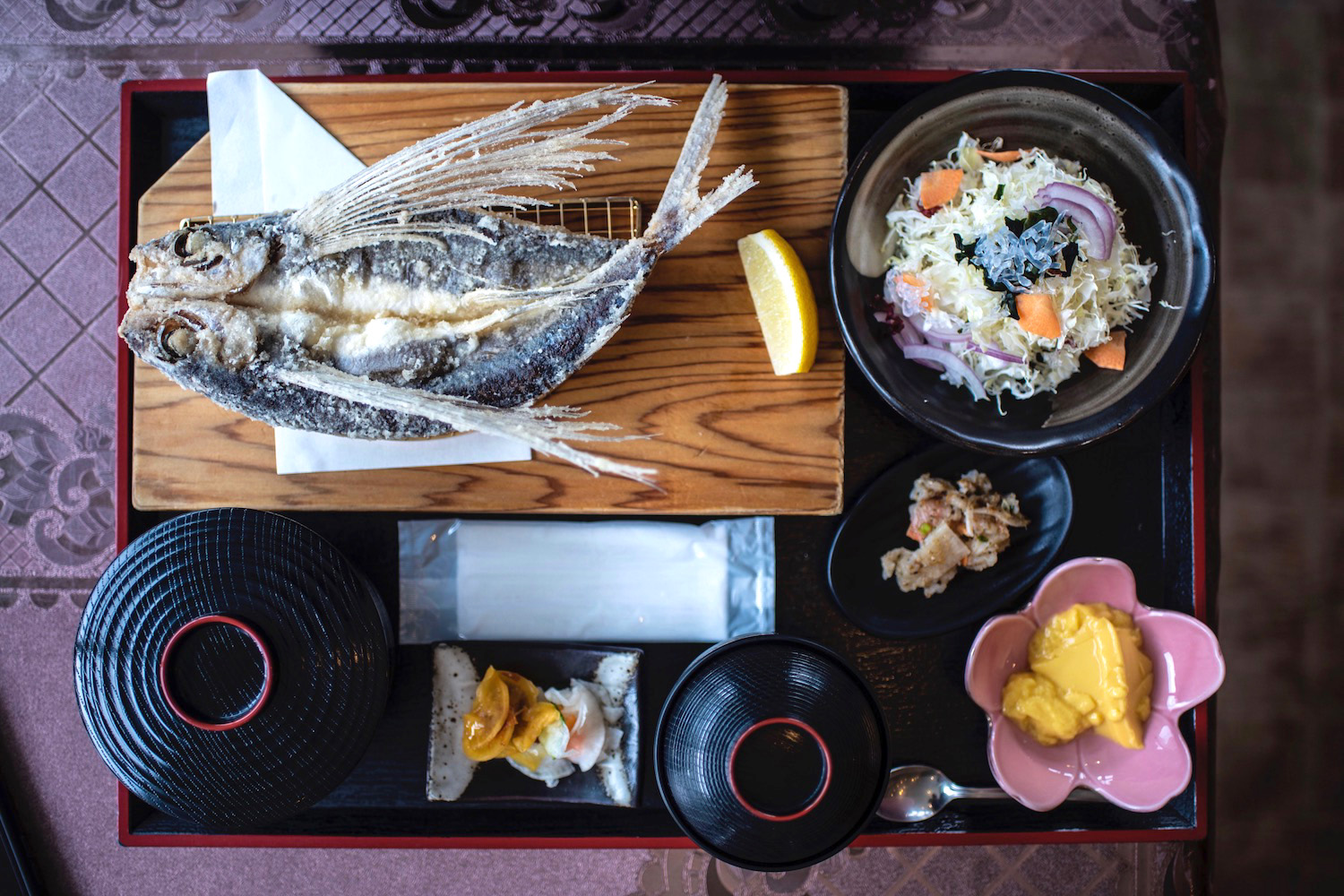
Another option for weird food in Japan is to head to Kagoshima, which I sometimes refer to as the “end of Japan,” since it’s the southernmost city of the four main Japanese islands. Whether in Kagoshima city or just offshore on Yakushima island, tobiuo (aka flying fish) is a food that unlocks local culinary customs.
Momiji (maple leaf) tempura, Osaka
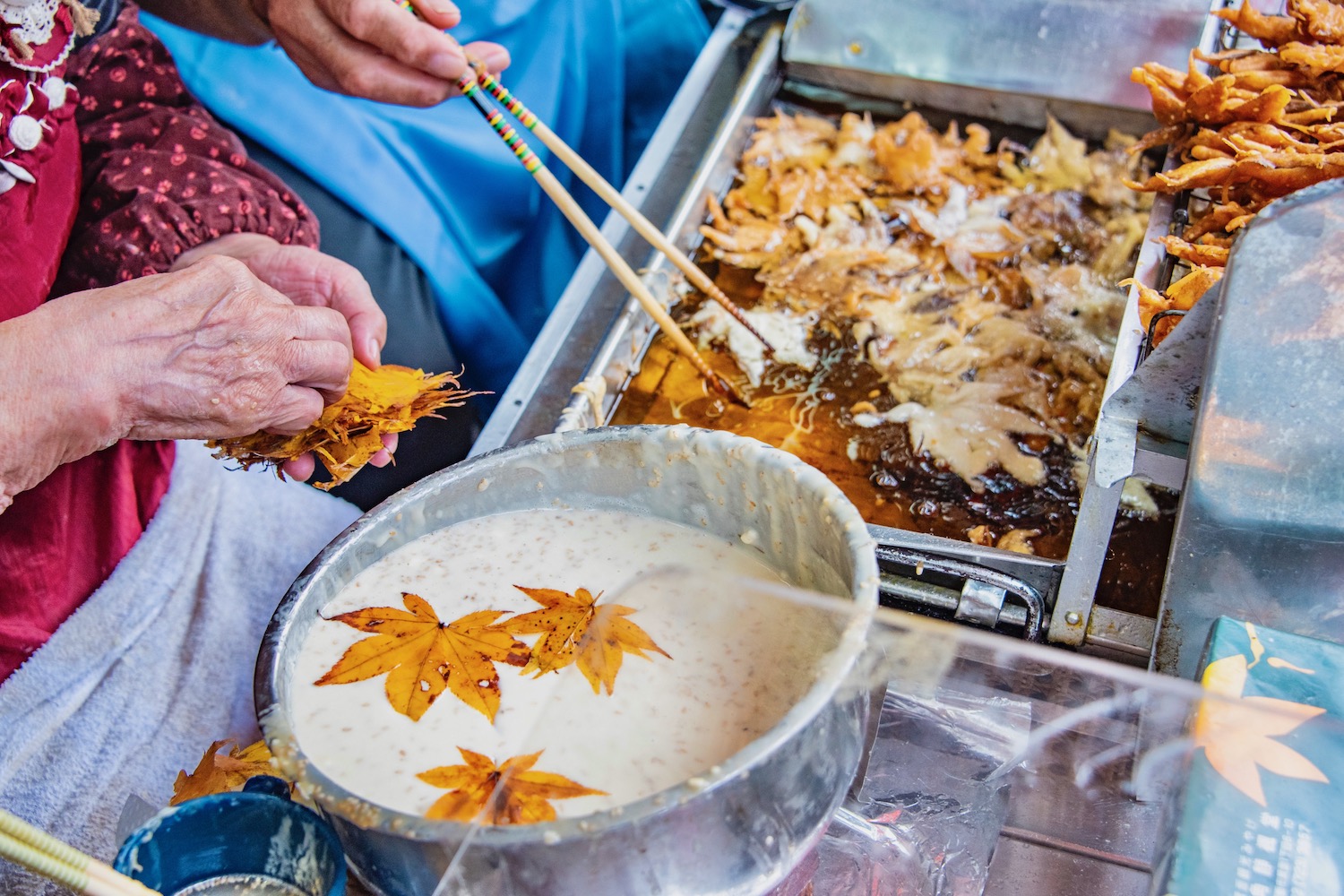
Another unique sweet treat is momiji tempura, aka fried maples leave. While these can now be found in several places in Japan during the autumn months, the best place to go is Mino, located about 30 minutes north of central Osaka via the Hankyu Railway.
Gyutan (beef tongue), Sendai
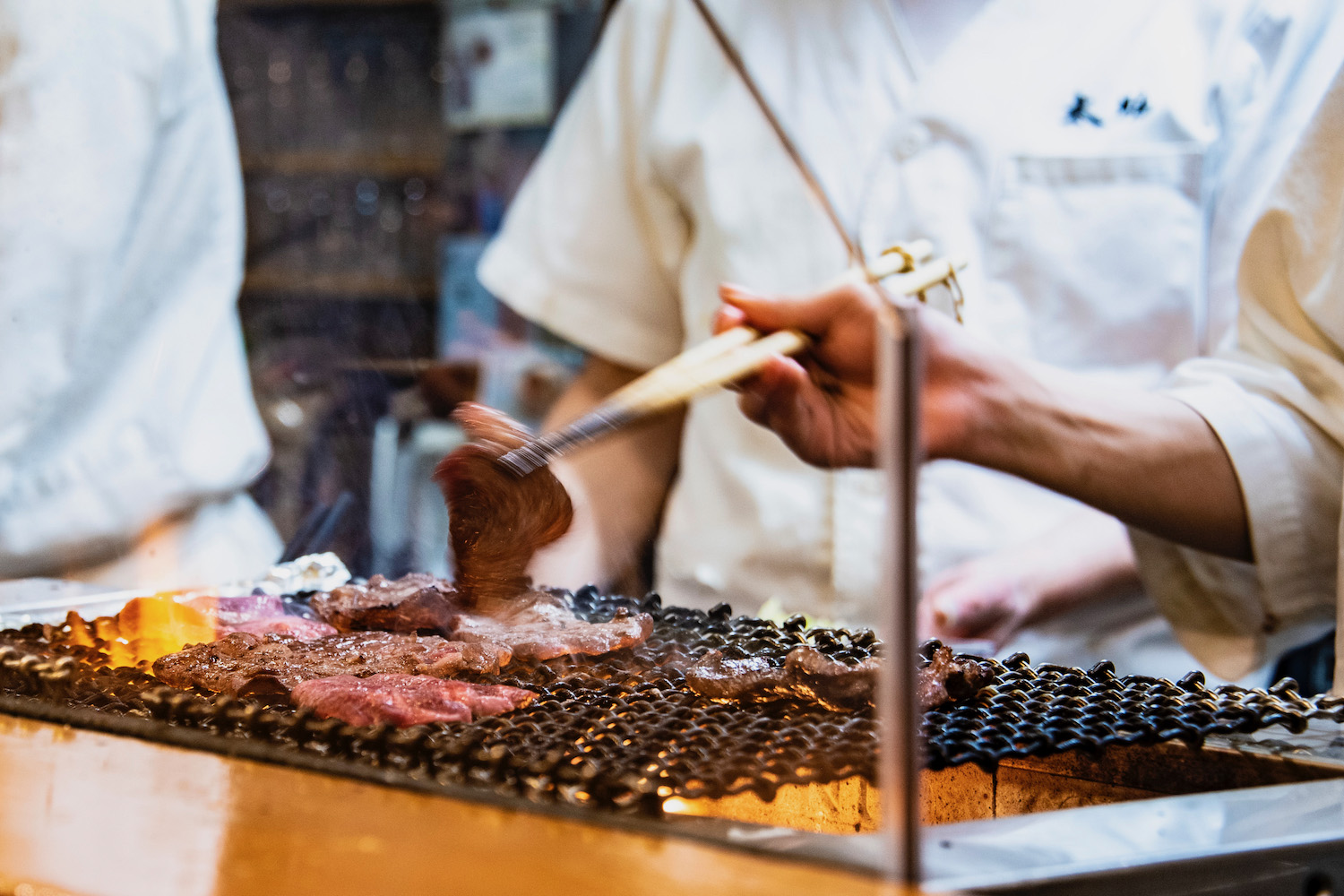
To some people (including Americans of a certain age, or those who live in more rural areas), gyutan (aka beef tongue) might not qualify as a strange food in Japan. Regardless, I recommend checking it out if your plans take you to underrated Sendai (and I hope they do).
Uni (sea urchin), Hokkaido
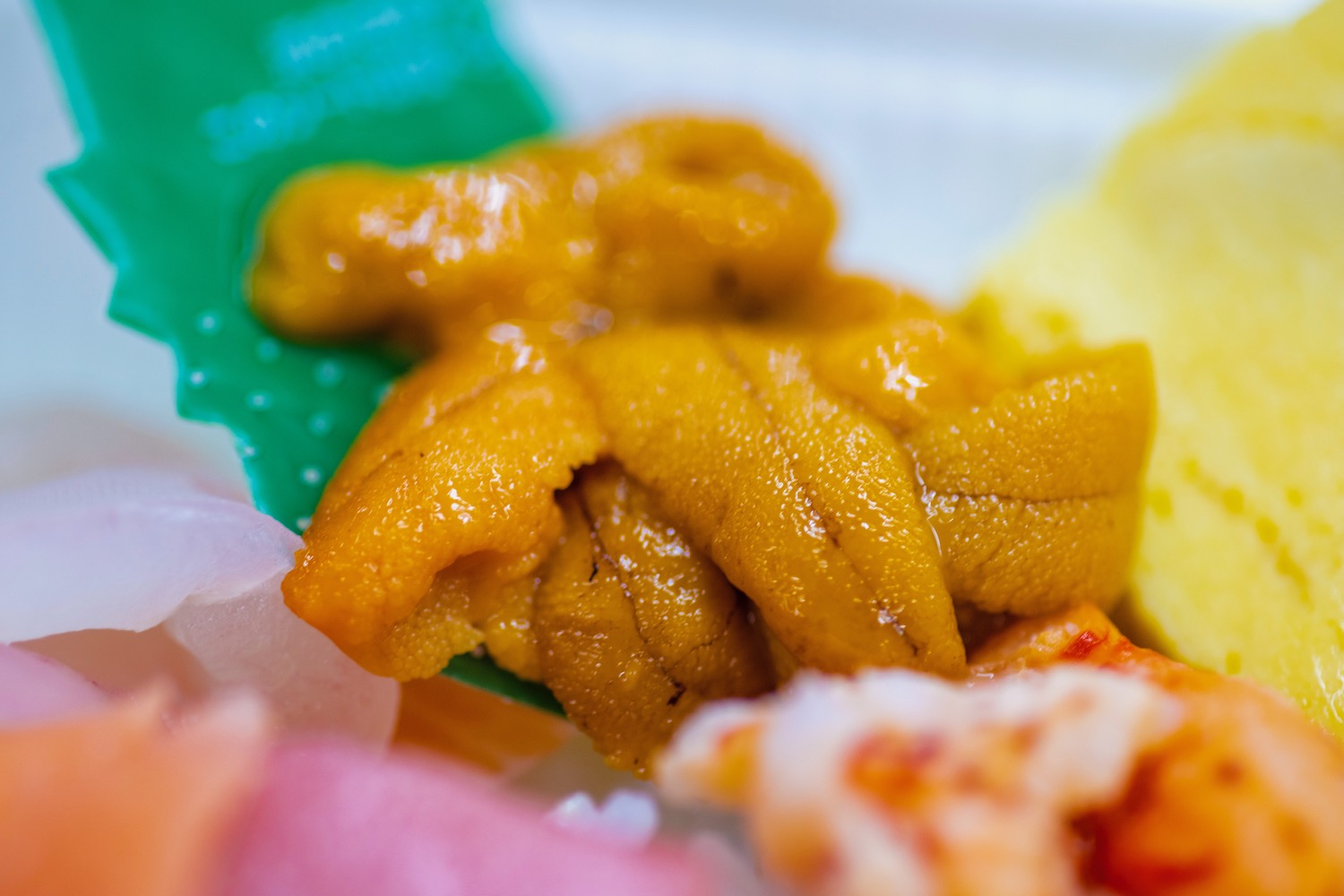
The final entry on this list is uni, aka sea urchin. I put this last because honestly, I waited years before I tried it. When I finally did (at Washo Market in Hokkaido’s Kushiro city) I was relieved to finally tick it off my list. I enjoyed the flavor, too, although I’d be lying if I said I was in a rush to eat it again.
The Best Way to Plan a Foodie Trip to Japan
Whether or not you consider Japanese food to be weird, it’s not necessarily the most accessible, whether because of the language barrier or because you simply need to know where to look. That’s the best news. The good news? There’s an easy way to make sure your trip hits all the right notes, culinarily speaking and otherwise—and it doesn’t require you to study Japanese or do an excessive amount of planning.
Other FAQ About Weird Food in Japan
What are some unique Japanese foods?
Many of Japan’s most unique foods are seafood, such as uni (sea urchin) and fugu (pufferfish), which was made famous to international audiences via an iconic Simpsons episode from the early 1990s. However, there are non-fishy items on the list as well, including maple leaves (momiji) fried tempura style.
What foods are unique to Japan except sushi?
There are literally dozens of foods that are unique to Japan—sushi is only the beginning. Some of these are relatively familiar to foreigners, such as uni (sea urchin) and takoyaki octopus fritters. Others are slightly stranger, such as tobiuo (flying fish) and soft serve ice cream topped with fresh wasabi horseradish.
Does Japan have exotic food?
Japan’s food is not exotic compared to many other Asian countries, whether we’re talking about spicy food and entrails in neighboring China, or the downright strange animals that show up on menus throughout Southeast Asia. However, with enough digging, you can enjoy some truly unique food items in Japan!
The Bottom Line
Which of these unique Japanese foods are you most excited to try? Looking back on my culinary adventures in the country, I’d say my favorites are probably flying fish and Momiji tempura, although each of these dishes was genuinely enjoyable (even if I had to try and forget the fact that I was eating tongue while eating tongue, for example). Certainly, if you travel all the way to Japan, it’s best to focus as much as you can on foods that are unavailable in your home country—you can have sushi anywhere in the world. Want to plan the ultimate foodie trip to Japan? Enlist my help for the best results.



